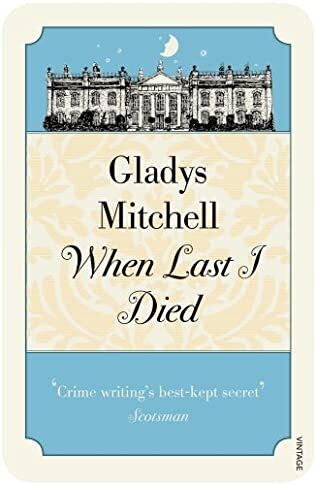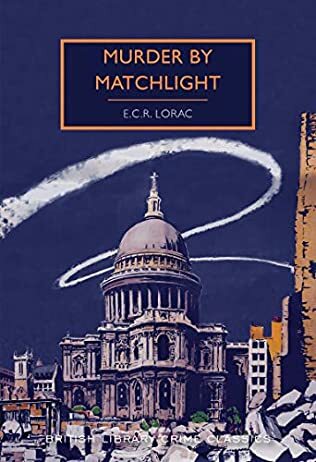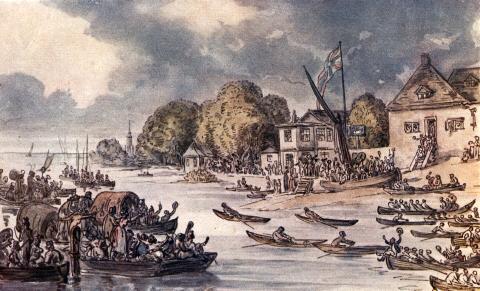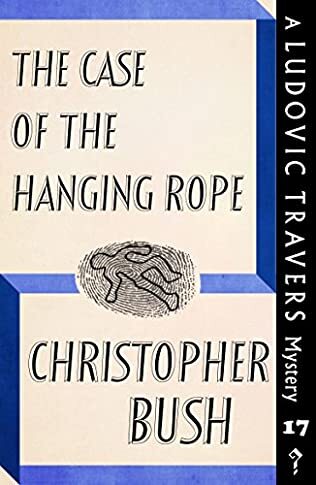Martin Fone's Blog, page 112
September 2, 2022
Death On Herons’ Mere

A review of Death on Herons’ Mere by Mary Fitt
Kathleen Freeman was a Classics scholar and university lecturer, who wrote murder mysteries and novels under several noms de plume, but mostly as Mary Fitt. Death on Herons’ Mere, which also went by the title of Death Finds a Target, originally published in 1941 and the seventh in her Superintendent Mallett series, has recently been reissued by the enterprising Moonstone Press.
Anyone who thought that Freeman would have plundered her extensive knowledge of Greek mythology to come up with an obscure but fascinating backstory that leads to murder most foul, à la Gladys Mitchell, will be in for a surprise. It is about as conventional a murder mystery as you could hope to find, set in a country mansion with a lake, bad weather which forces the evening’s guests to stay over for the night, smouldering resentment, and the clash of old money with new. The following morning Giles Gabb, the eldest son of Simon Gabb, is found dead in the boathouse by the mere, with a shotgun between his knees.
Giles was a troubled soul, a maverick genius who was working on a new, improved, highly efficient gun for the Government. Alarmingly, Simon Gabb, the owner of the business, had discovered that information about the gun had been leaked. Had Giles committed suicide or had his work on the gun motivated a gang or government agency to assassinate him or was there another explanation? This is the conundrum that Superintendent Mallett, aided by Doctors Fitzbrown and Jones, must solve.
The overnight guests were the younger members of the family that previously owned the house until their father’s debts forced them to sell. To add insult to injury, Simon Gabb had bought the gaff lock, stock and barrel and not changed a thing, making their return a disconcerting experience. There is also a love triangle which leads to heated exchanges during the evening. And then there is Giles’ brother, trapped in a loveless marriage, frustrating his wife’s ambitions, and suffering from sibling envy, viewed by his father as efficient and dependable rather than brilliant like his brother.
Mallett quickly rules out suicide and unravels what is a preposterously complicated murder plot involving three guns and three boats. At one point I wondered just how large Herons’ Mere was with all the shuttling about, although, of course, the early morning mists conveniently reduced visibility. Conversely, the identity of the culprit is as plain as a pikestaff. The more intriguing questions are why and whether the right victim had been killed.
Conventional as Freeman’s novel may seem, it does have some interesting stylistic features. The narrative switches perspective between chapters. Chapters concentrating on the progress of Mallett’s investigations alternate with chapters viewing the affair from the perspective of some of the key protagonists and suspects. It keeps the plot moving and allows the reader to get a better insight into the traits and psychology of her characters, making it easier to understand the personal dynamics and motivations that drive each to act and behave in the way that they do.
Freeman also writes beautifully, sensitive to nature and location, never wasting a word and with an unerring knack of painting a concise picture that contains just enough information for the reader to grasp the image and the point. She is not concerned to show off the depth of her learning or the range of her vocabulary. Her mission is to deliver an enjoyable piece of detective fiction which she achieves with some aplomb.
Death on Herons’ Mere will never be a true classic in the annals of Golden Age Detective Fiction, but is an entertaining and ultimately satisfying way to spend a few hours. I look forward to reading more of her novels.
September 1, 2022
Land Of Saints Organic Gin

In the battle for attention in the overcrowded market spawned by the ginaissance, Mike and Sue Bearcroft, the brains behind Land of Saints Organic Gin have a number of things going for them. As part of the name of their gin suggests, it is an organic spirit, the only gin company, as I write, which has been approved by the Organisation for Responsible Businesses. They are also Biodynamic Approved, which means that only ingredients of the highest quality are used, and their approval by the Soil Association adds another imprimatur as to quality. But that it not all. They have teamed up with Fauna and Floral International, the world’s oldest conservation charity, and at least 50p from the sale of each bottle goes to them by way of a donation. By drinking their gin, you can feel you are contributing to making the world a better place. I will drink to that!
After the Bearcrofts moved to the south Cornwall village of Devoran, four miles south west of Truro, in 2016 they decided that they would produce their own gin. They have teamed up with the Black and Gold Organic Distillery which is based in Porsanooth. To complete the Cornish theme, the name Land of Saints refers to the 69 saints who had made Cornwall their home and I picked up my bottle at the Aladdin’s cave that is Drinkfinder UK’s headquarters in Constantine.
And a wonderfully designed bottle it is too. Made of clear glass, rectangular in shape, the lower portion has a maritime blue colouring, which surrounds the silhouette of the map of Cornwall. The shoulders are broad, leading on to a medium sized neck and a wooden stopper with a real cork. Around the middle of the bottle, each of the other sides contains labelling, using, principally, the colours of green, white, and black, which tell of their organic credentials and their desire to leave “a lighter footprint on the planet”.
Distilled, obviously, with pure Cornish water and using a natural organic grain to make the base spirit, there are fourteen botanicals which include juniper, coriander seeds, cardamom pods, pink peppercorns, ginger root, dried rose buds, hyssop (a sweet evergreen herb), orange peel, camomile, violet leaves, blueberries, nutmeg, and orris root. There is a lot going on here and I always worry that in the battle to control the competing flavours and taste sensations, the result will be less than the sum of the component parts. Less is often more.
I need not have worried, though, because this gin has succeeded in maintaining its complexity while delivering a smooth, clean drink with a bite. The juniper is the dominant botanical and does not concede any ground to any of its rivals. There is warmth from the peppers and spices and a refreshingly zesty and slightly sweet finish from the citric and herbal elements. With a tonic it remains crystal clear and with an ABV of 40% is a good opener for an evening. It is definitely worth checking out.
Until the next time, cheers!
August 31, 2022
When Last I Died

A review of When Last I Died by Gladys Mitchell
Thirteen, they say, is lucky for some, unlucky for others. As someone who has struggled with Gladys Mitchell, I found this, the thirteenth in her Mrs Bradley series, originally published in 1941, not only more accessible but also thoroughly enjoyable. Part of the reason for this is Mitchell has dropped some of her more annoying stylistic tics such as reminding the reader at every opportunity of the psychologist sleuth’s saurian characteristics and peppering her speech with child or dear child.
Mrs Bradley is ever-present in this story. Her pursuit for the truth that lies behind the strange tale of Bella Foxley is her particular bee in her bonnet and hers alone, which she pursues with her usual vigour. Bella Foxley was a cook at an institution for delinquent boys, two of whom vanished around six years before the start of the book. Their disappearance still worries the Director who consults Mrs Bradley about the case. He tells her that Bella left her post around that time to look after her sick aunt from whom she was due to receive a legacy and that the aunt had died in mysterious circumstances, choking on some grated carrot. There were suggestions that Bella was instrumental in her death.
Bella then lives with her cousin, Tom, who is interested in the paranormal, and his wife. Tom is unfortunate to have been pushed out of a window of the supposedly haunted house twice, the second defenestration proving fatal and Bella is put on trial for murder, although the jury acquitted her, partly because of the malicious attitude of Toms’ wife. A year later, Bella, living with her sister, Tessa, is found drowned in the local lake, apparently the strain of the recent events causing her to commit suicide.
Mitchell adopts an interesting narrative style, much of the early chapters consisting of a verbatim reproduction of Bella’s diary, which Mrs Bradley’s grandson found while looking for something to use for a school project scrapbook, and an extract from the prosecuting QC’s account of the trial in his published memoirs. Although they appear early on in the narrative, they give the reader some of the clues they need to understand what is going on, even if they do not realise it at the time, and the interrelationship between Bella, her sister, and cousin Tom and his wife. The missing boys are frequently referenced in her diary. It is a fascinating way to set up the story.
Mitchell is happy to investigate the more eccentric side of life and much of Mrs Bradley’s investigations centre around the haunted house and enters the world of seances, poltergeists and ghosts. This gives Mitchell a glorious opportunity to poke fun at the enthusiasts and practitioners of “the other world” who commercialise it for their own ends. There is, however, a more practical and, ultimately more sinister, explanation for the paranormal activities which leads to the unravelling of the mystery.
Mrs Bradley’s investigations and the direction of the plot makes a significant and somewhat surprising turn of direction as the sleuth realises that her initial theories about who was pulling the strings was wrong, that there were small discrepancies in the timing of events and a key piece of evidence from a source that was dismissed that were enough to point the finger of blame in an entirely different direction. With so few obvious suspects Mitchell does a fine job in maintaining the tension and the air of mystery until the final chapters.
I thoroughly enjoyed this book and my faith in Mitchell is partly restored. She can be a frustratingly opaque writer who pushes the conventions of the genre to its limits, but here she has produced a winner.
August 30, 2022
Murder By Matchlight

A review of Murder by Matchlight by E C R Lorac
Published in 1945 and reissued as part of the excellent British Library Crime Classics series, this is Lorac’s twenty-sixth novel to feature Chief Inspector Robert Macdonald of the Yard and an excellent one it is too. Cleverly written, it keeps the suspense going until the end, the plot twists and turns, and although Lorac is careful to play fairly with her readers with the clues, the reader is never quite sure how it will end until the finale. Masterful stuff.
One of Lorac’s strengths is her sense of atmosphere and this book has it in spades. Anyone who has a romantic vision of wartime London should read this, just for the compelling descriptions of London during wartime, the darkness of the black out, the destruction of properties, the loss of human life, the impossibility of living a normal life, the constant fear that your home will be hit by a bomb and destroyed, the anxiety of where you would go if you lost your accommodation.
Cleverly, Lorac uses the blackness of the London streets in the set up of the murder. A match struck to light a cigarette illuminates the murderer standing behind, allowing Bruce Mallaig just a flicker of a glimpse of the culprit’s face before the victim is despatched. Mallaig reports the murder to the police, his story is collaborated by another witness who was standing underneath the bridge where the murder was committed, but are they telling the truth? Who was the victim and why was he using false identification? Why was a respected London physician walking his dog close to the murder site? Why were the murderer’s footsteps not heard by the witnesses?
Robert Macdonald has his hands full in investigating a case which might have been a political thriller – the victim had served with Sinn Fein – but it really is about a picaresque facet of London life. The victim is a wastrel, living off his wits, a spot of blackmail here, a bit of black market dealing there, and constantly borrowing money. He is looking after a flat in a block peopled with a motley and colourful cast of theatrics and looked after by a wonderfully comic landlady straight out of Dickens.
The plot takes another twist to reveal the motivation for the murder, one that involves an ill-advised marriage, bigamy, and a Peter Pan-like antiques expert. The motivation is perhaps the weakest part of the plot. The reader may well identify the murderer but precisely why the victim was killed is more difficult to deduce.
Macdonald comes as a warm, caring human being, determined to do his duty but in a way that shows empathy for those whom he encounters. He is full of compassion for the eccentrically colourful landlady, even arranging her a job after her block of flats was bombed out and working side by side with one of the potential culprits in clearing the bomb site, an episode that leads him to see another side of the suspect’s character. He uses a couple of reconstructions, one to confirm his theory about how the murderer got to the scene without being heard, and the other to smoke out the culprit.
An interesting sub-theme of the book is whether the quality of the victim should influence the degree to which the investigation is conducted. Macdonald is firmly of the opinion that the law is the law and no matter how deserving the victim’s end may be, it is society’s duty to pursue the culprit with full vigour. Any other approach leads to a form of Fascism, an argument that resonates today.
Lorac is a much and sadly underrated writer and deserves to find a new and modern audience.
August 29, 2022
The Origins Of The Race For Doggett’s Coat and Badge

With roads narrow, congested, and poorly maintained and London Bridge the only dry crossing over the Thames until well into the eighteenth century, the easiest way to travel around the capital was by water. Ferries ran at various points along the river, large enough to transport horses and wagons as well as pedestrians. Alternatively, four-passenger wherries could be summoned from the many stairs that led down to Thames. For those wishing to travel along rather than across the river, long ferries ran the length of the river from Chelsea in the west to Greenwich in the east.
Ferry franchises were lucrative and held by the Crown or aristocrats, who leased them out to a waterman. Being a waterman was a skilled occupation requiring a detailed knowledge of the tides and currents of the river as well as the ability to handle a heavy boat in all weathers. It was also extremely competitive, watermen congregating around the stairs, jostling for trade, crying “oars, oars, scull, oars, oars”.
John Stow’s A Survey of London (1596) gives an idea of the volume of river traffic and the numbers employed. “There pertaineth”, he wrote, “to the cities of London, Westminster, and borough of Southwark, above the number, as is supposed, of 2,000 wherries and other small boats, whereby 3,000 poor men, at the least, be set on work and maintained”. London’s population at the time was around 200,000.
The first attempts to impose some order on ferries were made in the 16th century with the passing of a statute in 1514 regulating fares and an Act of Parliament in 1555 establishing the Company of Watermen. A City Guild rather than a Livery Company, it introduced a one-year apprenticeship for passenger-carrying watermen plying their trade between Windsor and Gravesend.
The preamble to an Act of Parliament in 1603 openly criticised watermen stating that people travelling between Windsor and Gravesend “have been put to great hazard and danger and the loss of their lives and goods, and many times have perished and been drowned in the said River through the unskilfulness and want of knowledge or experience in the wherrymen and watermen”. Henceforth, watermen carrying passengers had to be at least eighteen years old and to have completed an apprenticeship lasting seven years. They were then entitled to become a freeman of the Company.
Dublin-born Thomas Doggett used his thespian talents to good effect, becoming “the leading low comedian of the London stage” and later an impresario, managing the Theatre Royal, Drury Lane, and the Haymarket Theatre. By the time he retired in 1713 he had amassed “a fortune sufficient for the rest of his life”.
A staunch Whig, a fervent supporter of the Hanoverian cause, and inspired, it is said, by an encounter with a newly qualified waterman who was the only one prepared to take him across the Thames on a foul night, Doggett placed a placard on London Bridge on July 31, 1715, the eve of the first anniversary of George I’s accession to the British throne. It read “there will be given by Mr Doggett an orange colour livery with a badge representing Liberty to be rowed for by six watermen that are out of their time within the year past. They are to row from London Bridge to Chelsea. It will be continued annually on the same day for ever”. The Brunswick Coat and Badge Wager, later known as the Race for Doggett’s Coat and Badge or the Wager, was born.
August 28, 2022
Sign Of The Week (12)

Those pronouns are difficult to handle, especially when you switch object midway through the sentence.
Disappointingly, there were no visitors trapped in the wicker basket where the games equipment was kept when I visited the beautiful National Trust property at Upton House, near Banbury.
August 27, 2022
Formula Of The Week (2)

Having a child in the back of the car can be trying at the best of times, especially when they decide to throw a tantrum. Fortunately, help is at hand to help parents predict when and how to mitigate a fretful child.
According to research carried out by Dr James Hind of Nottingham Trent University, the danger point for a tantrum is seventy minutes into the journey. Providing the child with some form of entertainment (E) for, say half an hour, will delay the tantrum by fifteen minutes and a further fifteen minutes can be bought by providing them with food (F). However, having other youngsters in the car (S) reduces the tantrum-free window by ten minutes.
For the mathematically inclined, he has encapsulated it all into a nifty formula, T = 70 + 0.5E + 15F – 10S, which might be worth pinning to the dashboard. Otherwise, it is worth remembering that the tantrum-free duration of your journey is about as long as you get before having to recharge your electric car.
He also informs us that the average child will first pose the query “are we there yet?” 32 minutes into a journey and will ask the very pertinent question four times per journey.
What would we do without academics?
August 26, 2022
Forty-One Of The Gang

To have been in the sun, according to James Ware in his Passing English of a Victorian Era, was to be drunk, as both drink and exposure to the sun produce a red face, a good example, he asserts, of direct satire by indirect means. Sun over the fore-yard was a naval expression denoting that someone was dead drunk, perhaps the result of swallering a sailor, drinking and getting drunk on rum. A sailor, though, who had swallered the anchor was one who comes home, loafs, and shows no sign of going back to sea again.
A colourful phrase with an interesting history is sworn at Highgate, an oath by which the swearer asserts that they will never accept anything offered while they can get something better. It owed its origin to a coloured cartoon published by Laurie and Whittle of 53, Fleet Street on September 12, 1792. In Ware’s time the best example of the cartoon was to be found at the Old Gate House at the top of Highgate Hill, the only place where the oath can be properly administered.
“The oath-taker is accompanied by a herald”, he writes, “who holds aloof the significant horns which are produced in letter form at the front of the tavern before which the operation is completed. The maid pins meanwhile a ragged clout to coat tail, while the mistress waits with a foaming pot of beer or rather a gallon measure, for the garnishing of everybody after the oath is complete”.
The declaration runs “pray sir – lay your right hand on this book and attend to the Oath – you swear by the Rules of Sound Judgement that you will not eat Brown Bread when you can have White, except you like the Brown the better; that you will not drink Small Beer when you can get Strong, except you like the Small Beer better – but you will kiss the Maid in preference to the Mistress, if you like the Maid better – so help you, Billy Bodkin. Turn round and fulfil your oath”.
The exceptions show that the oath was not an oath and for amusement regulars of the pubs in the vicinity would convince newcomers to swear the oath. Certain privileges were endowed upon the oath-swearer. As well as getting to kiss the prettiest girl in the establishment, if they needed a rest in Highgate, they could kick a pig out of a ditch and take its place. If there were three pigs in the ditch, he could only remove the middle one and had to rest between the other two. Arriving without any money would entitle him to free drinks but if money was then found on his person, he had to stand a round for everyone in the pub.
August 25, 2022
Rosemullion Dry Gin

The area around Mawnam Smith in western Cornwall is one of my favourite spots, boasting two wonderful gardens in Trebah and Glendurgan, the fabulous Helford river, and the Ferryboat Inn and is home to a proudly independent and innovative distillery, Rosemullion, which takes its name from the nearby Head. As well as gins, they distil rums and whisky. I have already tried (and reviewed) their Harvest Gin and on my recent visit to the headquarters of Drinkfinder in nearby Constantine, I decided to pick up a bottle of Rosemullion Dry Gin.
The bottle itself is a work of art, beautifully tactile, made of clear, rounded, slightly squashed glass, leading up to a wide neck with fashionably big lips, and a wooden stopper with natural cork. It just begs to be reused and has an ideal shape to be reused as a flower vase, water decanter, or a lamp. The logo, which appears on both the front of the bottle and on the wooden stopper is round and draws its inspiration from Celtic tradition. It boasts that the contents are “pure Cornish spirit” and that “Rosemullion Distillery are protectors and perfecters of the distillers craft”, although, sadly, not the apostrophe.
The distillery was established in 2018 by Andy and Liz Bradbury and their Dry Gin was introduced to the unsuspecting world in 2019. A family-owned and run business, one of their claims to fame is that they ferment their own base spirit, which in this instance is fermented sugar. They also use, wherever possible, local fruits and botanicals and the plentiful supply of rainwater for both fermentation and distillation. Production is distinctly at the smaller end of the spectrum with around a batch producing a run of a couple of hundred bottles using a copper pot still.
Twelve botanicals including juniper, coriander seeds, orange, orris root, angelica root, liquorice, anise, black pepper, lemon, and cassia bark are used to make the spirit which weighs in at an impressive ABV of 43%. I am always a little concerned when distillers stray away from the “traditional” grain base spirit. Those that use grapes or apples can give the spirit a rather acerbic taste which no amount of botanical alchemy can completely overcome. However, the use of a fermented sugar base moves the spirit the other way, giving it a very full-bodied, distinctive character, with a distinctly sweet, almost herbal aroma.
In the mouth, juniper is to the fore, but the tartness of the citric elements combined with the sweetness of the liquorice and the earthier notes from the coriander, orris, and angelica make for a very complex, well-rounded, and very moreish spirit. The addition of a premium tonic causes it to louche slightly, taking on a creamier consistency, and seems to enhance the herbal, citric and sweeter elements amongst the botanical profile. The gin signs off with a lingering hint of black pepper.
It was fascinating to note how the flavour profile changed with the addition of a tonic and it just goes to show that you should pay just as much attention to what you put in your gin as you do in selecting the spirit of your choice in the first place. I enjoyed what is a quirky twist to a classic dry gin, proof positive that with imagination and ingenuity there are plenty enough combinations of botanicals and approaches to satisfy even the most demanding gin aficionado without needing to stray into the treacherous waters of flavoured gins.
Until the next time, cheers!
August 24, 2022
The Case Of The Hanging Rope

A review of The Case of the Hanging Rope by Christopher Bush
I normally enjoy Christopher Bush’s Ludovic Travers series, but I found this seventeenth adventure, originally published in 1937 and reissued by Dean Street Press, a tad disappointing. Also known as The Wedding Night Murder, the society beauty and pioneering airwoman, Sonia Vorge, whose wedding Travers has witnessed, is found murdered on her bridal bed in Montage Hall and her hubby is drugged in the other room with a rope fashioned like a noose above his bed. Shortly after the murder, the butler espies the ghost of Montage Hall stalking the corridor.
Inevitably, there is more to all this than a simple murder of a scheming and unpleasant woman, who has a murky past. We quickly enter a world of sophisticated international art theft using the latest in new-fangled technology, a private aeroplane, and competitive contract bridge as a front. Travers and Wharton of the Yard have their work cut out to work out what is going on, a task not helped by some enormous red herrings and some intriguingly solid alibis.
Bush has invested most of his energy in constructing some ingenious methods to construct an alibi, one distinctly Heath-Robinsonish involving a kettle and the other, slightly preposterously, using a dog of a breed notorious for their ability to snore. Travers works them out and once he has clarity that some of the suspects were not where they were at the time they said they were, he moves closer to solving the mystery.
I think part of my problem with this book is the role of Travers himself. His method of eliciting information from suspects are a little unconventional to say the least, bordering on entrapment. He also decides to play judge and jury, playing fast and loose with the law, making personal deals with one of the culprits to the extent that they evade the arms of the law once they have restored some property. He also places another into a position where the only way out is for them to take their own life, something, to his credit, Travers regrets, although perhaps he should have seen where it was all going to end up.
Despite their amiable relationship, their repartee is one of the highlights of the book, Travers and Wharton keep their distance from each other, feeding each other such information they have garnered as they feel necessary but each playing their own distinctive game.
The ending of the book is a little too rushed, given the time that has spent in setting up the mystery, and there are too many questions and loose ends to make it a truly satisfying case. The rope, for example, is sufficiently important enough to take its place in the book’s title, but in the end it is just another piece in the jigsaw rather than the central plotting device around which the story hangs. It is, though, worth spending some time studying the family tree Bush has provided at the beginning of the book to cement the relationships in your mind. They can be confusing especially as the first names of two of the protagonists with the same family name both begin with P.
On the positive side, Bush writes with some vigour, not a little humour and keeps the plot moving. There are also some intriguing contemporary references, including one to Mr Growser, the disgruntled grocer in the children’s radio show, Toytown, and the Coronation, not the one that sparked off the Jubilee celebrations that were on-going when I finished the book, but that of George VI on May 12, 1937.
This is a book for the completist rather than one to discover Bush with.



